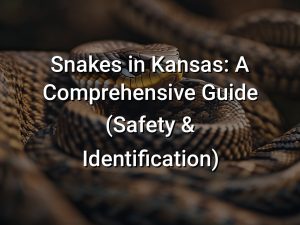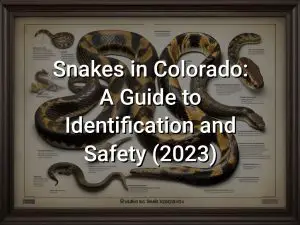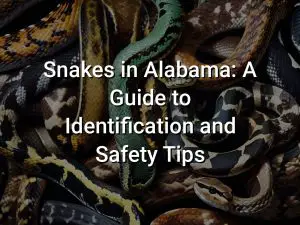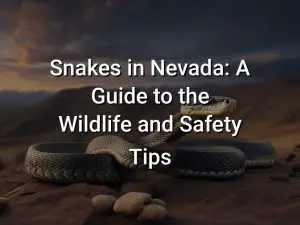Snakes in Vermont: Facts, Identification, and Safety Tips
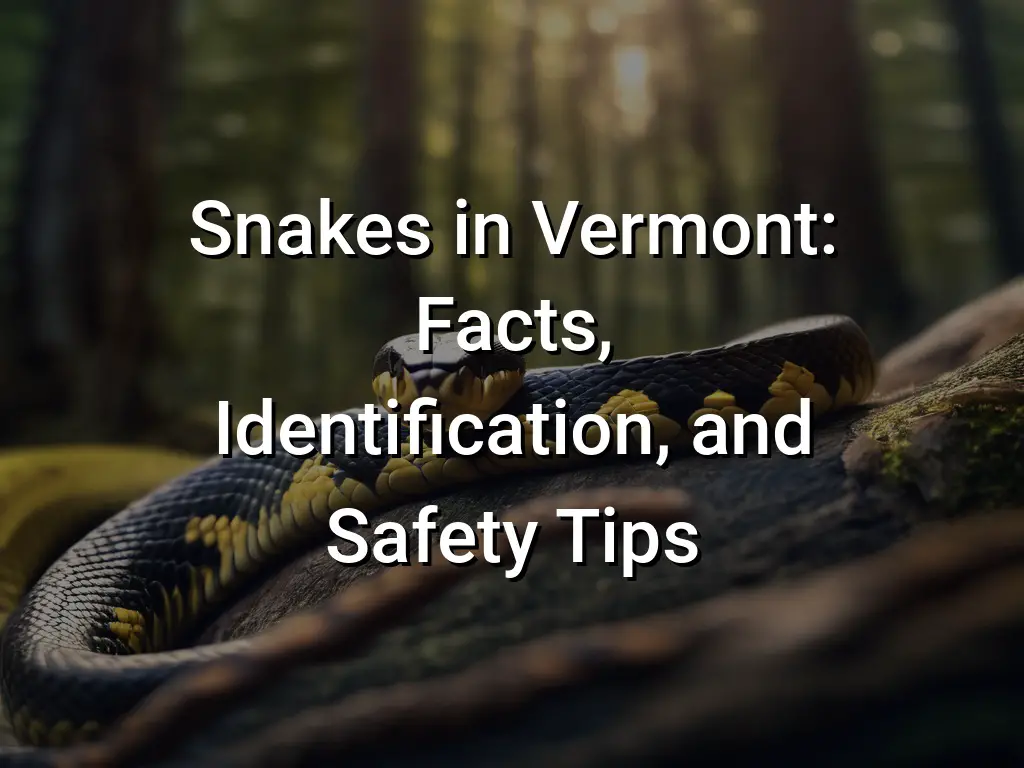
Snakes, these fascinating and often misunderstood creatures, can be found even in the most unexpected places, including Vermont. Nestled in the northeastern part of the United States, Vermont is home to a variety of snake species. In this article, we’ll dive into the facts, identification, and safety tips for dealing with snakes in the Green Mountain State.
First, we’ll explore the different types of snakes that can be found in Vermont, highlighting their unique characteristics and habitats. Then, we’ll provide helpful tips on how to identify these snakes, enabling you to distinguish between venomous and non-venomous species, ensuring your safety and the snake’s well-being. Finally, we’ll wrap up with some essential safety tips for encountering snakes in Vermont, equipping you with the knowledge and confidence to coexist peacefully with these incredible creatures.
Quick Links
Types of Snakes in Vermont
Vermont is home to a variety of snake species, some of which are venomous and others that are harmless. It’s important to be able to identify the different snake species in Vermont for your safety and to better appreciate the biodiversity of the state.
1. Eastern Milk Snake – This snake is often mistaken for the venomous Eastern Coral Snake due to its similar coloring, but it is harmless. The Eastern Milk Snake has a brown or grayish body with reddish-brown blotches down its back.
2. Eastern Garter Snake – This is one of the most common snakes in Vermont and is harmless. It has a long and slender body with distinctive stripes running down its back, usually in a combination of green, brown, or black and yellow.
3. Eastern Rat Snake – Also known as the Black Rat Snake, this snake can grow quite large. It has a black body with hints of gray or white and a white underbelly. The Eastern Rat Snake is not venomous but can bite if threatened.
4. Timber Rattlesnake – Vermont is home to a small population of Timber Rattlesnakes, which are venomous. They have a thick body with dark blotches or bands and a rattle on their tail. If you encounter a Timber Rattlesnake, give it a wide berth and do not provoke it.
5. Northern Watersnake – Found near bodies of water, the Northern Watersnake has a dark brown or grayish body with dark blotches down its back. It is non-venomous but may bite if handled or threatened.
6. Smooth Green Snake – This snake is small and slender with a bright green body, making it easily recognizable. It is harmless and often found in grassy or marshy areas.
These are just a few examples of the snake species you might encounter in Vermont. Remember, when encountering a snake, it’s best to observe it from a safe distance and avoid touching or provoking it. Snakes play an important role in the ecosystem and should be respected and appreciated.
Identification of Vermont Snakes
Vermont is home to a variety of snake species, some of which are harmless and others that are venomous. It’s important to be able to identify these snakes to ensure your safety and the well-being of the snakes. Here are some common snakes you may encounter in Vermont:
- 1. Garter Snake: Garter snakes are the most common snake species in Vermont. They are typically harmless and can be identified by their long, slender bodies and distinct stripes down their backs.
- 2. Milk Snake: Milk snakes are non-venomous and resemble the venomous copperhead snake. However, milk snakes have smooth scales and a pattern of red, black, and yellow bands.
- 3. Northern Water Snake: Northern water snakes are semi-aquatic and can be found in or near bodies of water. They have dark, blotchy patterns on their bodies and are not venomous, but they can be aggressive if provoked.
- 4. Eastern Ratsnake: Eastern ratsnakes are one of the largest snake species in Vermont. They have black bodies with white or gray blotches and are non-venomous.
- 5. Timber Rattlesnake: Timber rattlesnakes are the only venomous snake species in Vermont. They have a distinctive rattling tail and can be identified by their triangular-shaped head and distinct patterns on their bodies.
When encountering a snake in Vermont, it is important to keep your distance and avoid provoking or attempting to handle the snake. If you are unsure about the species of snake or if it poses a potential threat, it is recommended to contact a local wildlife expert for assistance.
Safety Tips for Dealing with Snakes in Vermont
Snakes are an important part of Vermont’s ecosystem, but encountering them can be intimidating for some people. Here are some safety tips to keep in mind when dealing with snakes in Vermont:
- Stay calm: If you encounter a snake, try to remain calm. Most snakes in Vermont are non-venomous and pose no threat to humans.
- Keep your distance: It’s important to keep a safe distance from snakes and avoid approaching or touching them. Give them space and let them go about their business.
- Identify venomous snakes: While rare, there are a few venomous snake species in Vermont, such as the timber rattlesnake and northern copperhead. It’s crucial to familiarize yourself with their appearance to avoid any potential interactions.
- Don’t provoke or disturb: Snakes will typically only strike if they feel threatened or cornered. Avoid provoking or disturbing them, especially if they are venomous.
- Keep pets on a leash: If you’re outdoors with your pets, make sure to keep them on a leash. This will prevent them from encountering snakes and potentially getting bitten.
- Wear proper footwear: When exploring snake-prone areas, such as tall grass or rocky outcrops, wear closed-toe shoes or boots to protect your feet from snake bites.
- Learn about snake habitats: Educate yourself about snake habitats in Vermont, such as wetlands or rocky areas, and be cautious when in these locations.
- Teach children about snakes: It’s essential to educate children about snakes, their importance in the ecosystem, and proper safety precautions. Teach them to respect and appreciate snakes from a distance.
- Report sightings: If you encounter a rare or out-of-place snake, consider reporting the sighting to local authorities or wildlife organizations. This information can help with conservation efforts and tracking snake populations.
By following these safety tips, you can coexist with snakes in Vermont and appreciate their role in the environment while ensuring your own well-being.
Conclusion
While encountering snakes in Vermont may be unsettling for some, it’s important to remember that most snakes in the state are non-venomous and pose little threat to humans. By becoming familiar with the types of snakes in Vermont and learning how to identify them, you can better understand their behavior and how to safely interact with them.
Remember to always keep a safe distance from snakes, avoid disturbing their natural habitats, and never attempt to handle or provoke them. By following these safety tips and respecting the natural environment, you can coexist peacefully with the snake population in Vermont.

